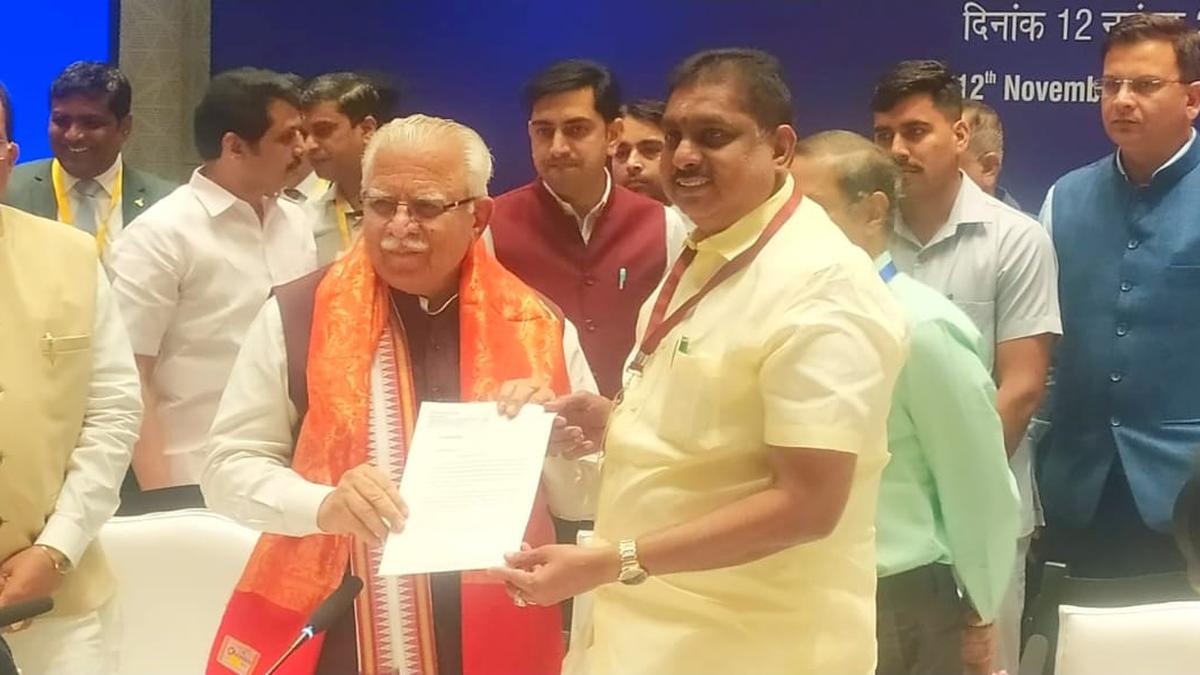
U.T. seeks Centre’s nod to implement Smart Meter Project with post-paid plan option
The Hindu
Puducherry government seeks post-paid option for Smart Meter Project, requests Centre for increased grant and power reallocation.
The Puducherry government has appealed to the Union Ministry of Power to consider implementing the Smart Meter Project with post-paid plan option during initial stages of rolling out of the scheme in the Union Territory.
In a memorandum submitted to Union Minister for Power Manohar Lal Khattar in New Delhi, Minister for Home A. Namassivayam said there was “stiff resistance” from people for implementing prepaid Smart Meter Project in Puducherry. The Centre should consider implementing the scheme with post-paid plan option during the initial stages, he said.
“There is stiff resistance from various quarters for the pre-paid Smart Meter Project. It will be difficult to introduce the prepaid functionality at the beginning stages of the implementation. So, it is proposed to implement the scheme initially under post-paid mode and then gradually convert to the prepaid mode, after the consumers realise the advantages and get accustomed to the prepaid mode. Therefore, it is requested to allow the execution of the project under post-paid mode and to enable the prepaid feature on completion of the project,” Mr. Namassivayam, who is also the Minister for Electricity, said in his memorandum.
He handed over the memorandum to Mr. Khattar on the sidelines of the Electricity Ministers conference held in New Delhi two days ago. The Minister also requested the Centre to increase the grant for implementing the Smart Meter Project under the Revamped Distribution Sector Scheme (RDSS) in the Union Territory. The increase in allocation of grant was necessary to reduce the burden of the U.T. administration. The government has already submitted a proposal to Power Finance Corporation under modernisation component of the RDSS at a cost of ₹474 crore. The Centre’s sanction was sought for the scheme, the memorandum said.
The Centre has also been requested to consider reallocation of power to the Union Territory from cheaper/older power generating stations to reduce power tariff burden of consumers. The entire power requirement of the Union Territory was met through power allocated from Central generating stations. The region received 590 MW of power from stations, such as NTPC, NLC and NPCIL at a low cost, the memorandum said.
“In the recent past due to allocation of power from various high-cost power plants under unallocated share of power and due to manifold increase in the cost of transmission charges, the cost of power purchase made by the Puducherry government has gone up resulting in the increase of power tariff. So, the Centre should consider reallocation of power from the cheaper/older power stations which will help reduce further hike in power purchase cost and reduce DISCOMs tariff for industrial growth in the Union Territory,” he added.
In order to meet the growing power requirements of all categories of consumers, the Electricity Department should be allowed to access around 620 MW of power. “The General Network Access (GNA) is only about 540 MW allocated to the Union Territory. An increase in GNA to the tune of 620 MW is required to enable the government to meet the additional power demand in the Union Territory,” the memorandum said.

Attack on Chennai doctor | T.N. hospitals to have tag system for patient attendants: Health Minister
A day after a senior medical oncologist was attacked by a patient’s son inside the Kalaignar Centenary Super Speciality Hospital (KCSSH), Tamil Nadu Health Minister Ma. Subramanian on Thursday (November 14, 2024) said a tag system for patient attendants would be introduced in all government medical college hospitals, district headquarters hospitals, and taluk hospitals in the State in a phased manner.

Chennai-headquartered The ePlane Company, which is in the electric vertical take-off and landing (eVTOL) space, has closed a $14 million funding round. eVTOLs are air taxis or flying taxis that are similar to a helicopter. They are typically designed to carry around two to six passengers, including the pilot.









